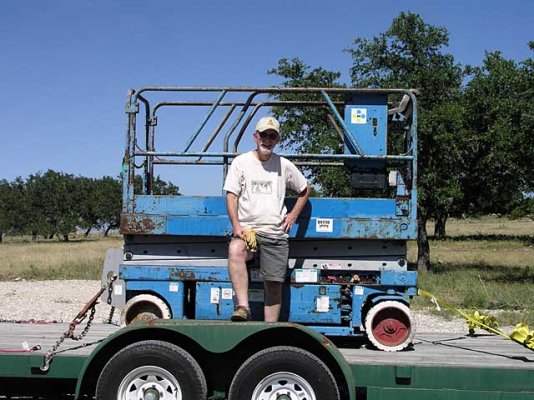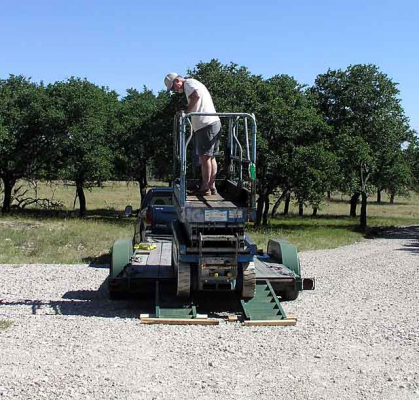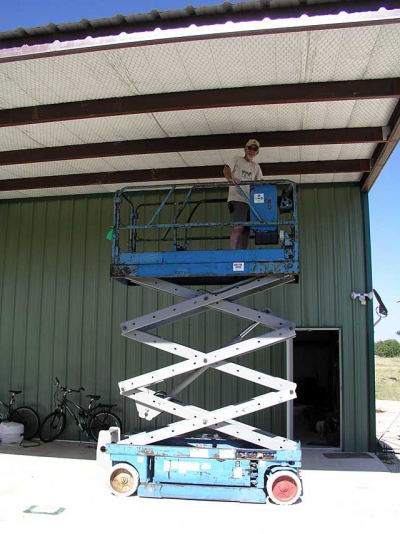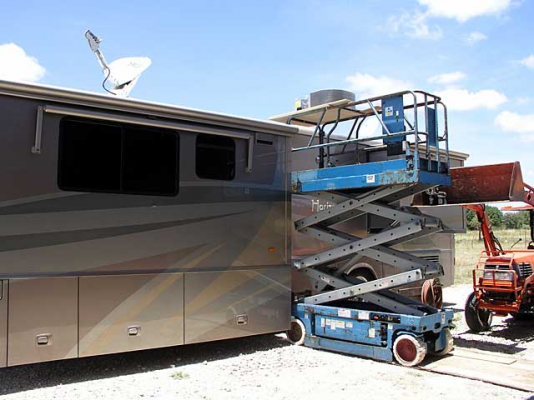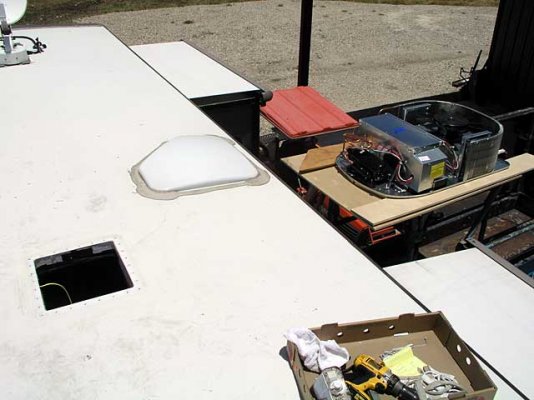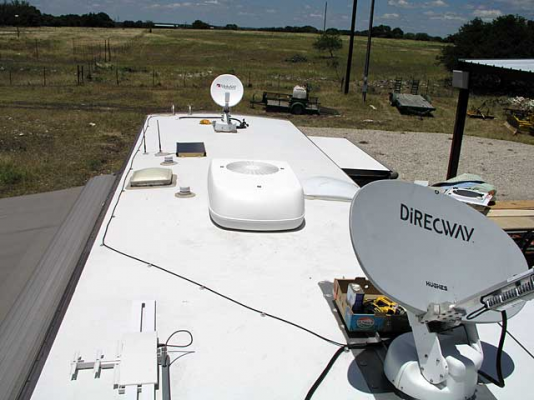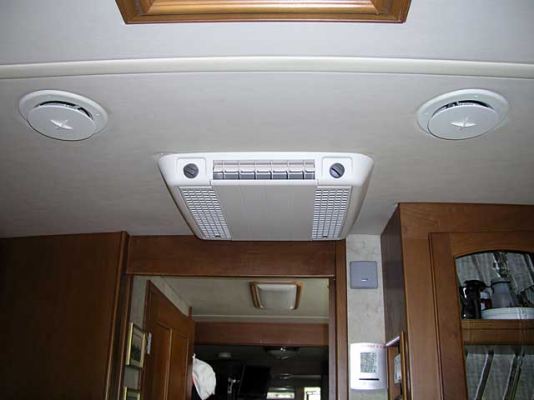Michael - that is
so kind! Thank you very, very much for the offer. Careful planning paid big dividends and scooting the roof unit in place from the Genie lift was easy and simple. The stamped sheet metal of the roof unit had pretty sharp edges and I sprung a leak on my thumb. Then I got a pair of gloves :

Just got the install completed about 4 PM CDT. Could have been done by 3 PM if I had a circuit breaker on hand. Had to make the 50 mile round trip into Kerrville to find a Cutler-Hammer 20 amp breaker. I have used SquareD, Siemens, and GE breakers before, but never a Cutler-Hammer.
First impressions...
- The low profile roof unit is not obtrusive at all
- We now have new sounds and noises, roof noise when you are outside, and blower noise inside the salon. I think I have become a fan-boy of basement air due to the blower living in a far corner of the coach, however the new noise is
perfectly acceptable considering the end result ;D
- Roof air on high cool is fairly noisy. It appears we will only need to run the roof air on high cool for a while during the hottest part of the day, low cool otherwise in the afternoon for basement air augmentation and to cool the interior as desired
- As I sit here at the salon table typing this, I am starting to get really cold - the roof unit is blowing cold air on me (the table is 73 degrees.) How sweet it is

- The cab area is still warm (~ 80 degrees, but cooling) even with the MCD shades lowered. We won't have even temperature distribution inside unless we run a box fan or two (that's not in the plans though)
- With the roof air blowing cold air very close to the basement air thermostat, that's going to create a little problem with figuring out what temperature to set the basement air thermostat
- Air temperature exiting the roof air (on low cool) is in the 30s, forward vents of the basement air are reading in the 40s, outside air temps are 92 degrees. The difference might be due to heat gain while the chilled air is making the long roof duct run
- Should have installed roof air three years ago when I first thought about it
- No idea yet how effective roof air will work while we are running down the road in the summer. I would like to only run the roof air while on the road due to the unit being up and out of the way of road dust and dirt
- The project wasn't too difficult (the major problem being how to get the unit on the roof), but working in the small breaker panel while laying on the floor wasn't my best moment
- It's nice to have a backup AC unit
When time permits, I'll do a full project write-up for our web site.

